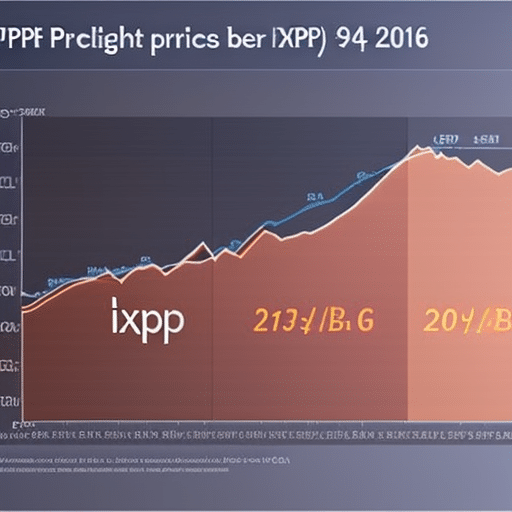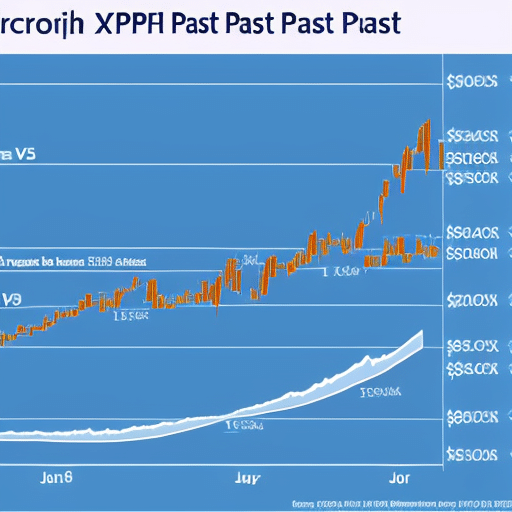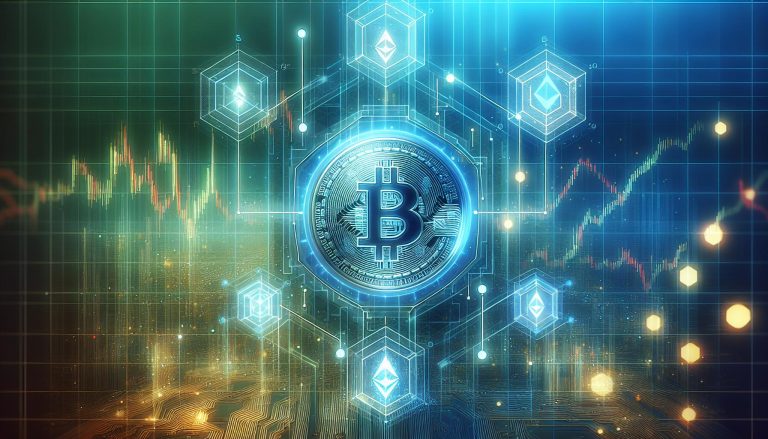Xrp Ecosystem Dynamics
The XRP ecosystem is like a complex machine, with a variety of cogs and levers that drive its movement. Its dynamics are multifaceted, involving stakeholders from all over the world. In order to understand how this intricate system works, it is necessary to explore its history, regulations and compliance, participants, use cases and interaction with the global economy. This article offers an overview of XRP’s ecosystem dynamics by examining each of these components in detail.
Overview of XRP
XRP is a digital asset designed to facilitate the transfer of money across international borders with low transaction fees and fast settlement times. Developed by Ripple Labs, it was released in 2012 and has since grown to become one of the most popular cryptocurrency networks in operation today. XRP offers numerous advantages over traditional banking systems, including increased security implications due to its decentralized network architecture and blockchain technology advancements that enable quick transactions with minimal processing costs. It also features an innovative consensus algorithm which allows for faster validation than other similar networks. As such, XRP provides users with a reliable and cost-effective way to exchange value across international borders with relative ease. In conclusion, XRP has revolutionized global finance through its efficient technology capabilities and enhanced security measures. The next section will focus on the history of XRP and how it has developed over time.
History of XRP
The history of the digital asset has undergone numerous changes, with its value and usage evolving over time. Ripple’s origin dates back to 2004 when Ryan Fugger founded a financial service allowing individuals to create their own money systems using a decentralized network. In 2012, Jed McCaleb and Chris Larsen acquired Fugger’s company and rebranded it into the now-popular Ripple network, incorporating XRP as its native currency. Since then, XRP has seen significant changes in value due to the speculation of cryptocurrency markets, reaching an all-time high in 2017. With its increasing popularity came increased regulation from global governments aiming to protect investors from fraudulent activity and market manipulation.
As such, XRP is increasingly becoming subject to compliance protocols that have been adopted by banks and other financial institutions worldwide. To ensure trust and security in the system, Ripple Inc., the creators of XRP has implemented various measures aimed at mitigating risk associated with digital assets while facilitating smoother transactions for users across borders. This includes strict anti-money laundering (AML) policies which are enforced by dedicated teams monitoring suspicious activities on their platform. As a result of this heightened security, XRP is now considered one of the most trusted cryptocurrencies on the market today with many investors feeling comfortable enough to integrate it into their portfolios as part of a diversified portfolio strategy. Moving forward, further regulations may be mandated in order for XRP to continue its growth trajectory within traditional finance circles while providing reliable services for users around the world.
Regulations and Compliance
The discussion of Regulations and Compliance must take into account the current Regulatory Framework which is relevant to this topic. It is also important to consider potential Regulatory Challenges that may arise in the future. This will give a comprehensive overview of how regulations and compliance may affect XRP, its ecosystem dynamics, and other related topics.
Regulatory Framework
Amidst the ever-changing landscape of cryptocurrencies, it is essential to remain mindful of the regulatory framework that governs XRP; as the old adage goes, ‘forewarned is forearmed’.
To this end, there are certain key aspects of regulatory compliance with XRP that must be considered:
- Privacy implications – It is important to understand that all transactions made through XRP are viewable on a public ledger. This means that users must take extra steps to ensure their privacy when using XRP.
- Compliance costs – The legal and compliance costs associated with using XRP can be high due to its decentralized nature and global reach. These costs must also be taken into account when considering whether or not to use XRP in any given situation.
- Regulatory uncertainty – As regulations governing cryptocurrency continue to evolve, so too does the uncertainty surrounding them and how they impact XRP usage and transactions.
Given these considerations, it is clear that understanding the current regulatory framework surrounding XRP is an important step towards successful adoption and use of this cryptocurrency. To further explore these issues and gain a deeper understanding, we now turn our attention towards examining the various regulatory challenges facing XRP today.
Regulatory Challenges
It is important to recognize that the ever-evolving regulatory landscape presents a number of challenges for XRP users. These challenges can be divided into two main categories: marketplace impact and financial institutions. On the one hand, due to the decentralized nature of XRP, it is difficult for regulators to create rules and regulations that apply uniformly across all countries. This has resulted in a patchwork of different policies which make it difficult for users to understand what is allowed and prohibited in each jurisdiction. Furthermore, regulation can also create roadblocks for businesses wanting to enter the XRP space as they are required to adhere to different standards depending on their location.
On the other hand, financial institutions are faced with a unique set of challenges when dealing with XRP. For example, banks must ensure compliance with anti-money laundering (AML) regulations when processing transactions or providing custodial services related to XRP holdings. Additionally, many jurisdictions have not yet developed clear guidelines regarding how financial intermediaries should deal with digital assets like XRP, leaving banks without an established framework from which they can operate within. As such, navigating these uncharted waters while still remaining compliant requires a great degree of expertise and resources from both sides of the equation. As such, these regulatory challenges must be carefully considered when discussing the dynamics of the XRP ecosystem. Moving forward, it will be essential that regulatory authorities provide clarity around these issues so that users and financial institutions alike can take full advantage of this exciting new technology in an informed and responsible manner.
XRP Ecosystem Participants
The XRP ecosystem is comprised of various participants, including exchanges, investors, and developers. Exchanges facilitate the buying and selling of XRP tokens for other cryptocurrencies or fiat currencies. Investors purchase XRP tokens to speculate on their future value. Developers are responsible for the development of applications and services that make use of the XRP ledger technology. Each participant plays an important role in the overall health and success of the ecosystem.
Exchanges
Exchanges are integral to the XRP ecosystem, playing a significant role in determining liquidity and tradability of the cryptocurrency. As an essential part of the network, exchanges provide liquidity management and scalability for traders who wish to buy or sell XRP tokens. This is important as it helps create an efficient market for the asset, allowing buyers and sellers to quickly trade with one another without having to wait for long periods of time. In addition, exchanges are also responsible for providing access to different currencies that can be used as trading pairs with XRP, further increasing its potential use cases. By facilitating these activities on their platforms, they help contribute to making XRP a more liquid asset among investors while also allowing users to take advantage of global trends in order to maximize returns on their investments. With this in mind, it is clear that exchanges play an important role within the XRP ecosystem and are key actors when it comes to optimizing its liquidity and scalability.
Thus far we have discussed how exchanges form a vital part of the XRP ecosystem by helping increase liquidity and network scalability through their services. The next step is looking at how investors contribute towards furthering adoption of Ripple’s native token.
Investors
As an ever-growing force, investors are like a surging tide, steadily pushing the XRP token further towards mainstream adoption. Investment strategy is the key to success as these investors must look beyond short-term gains and focus on long-term sustainability of their portfolios. As such, they must carefully weigh up the risks associated with investing in XRP versus its potential rewards before making any decisions. Furthermore, good liquidity management is also essential for investors to ensure that funds can be quickly accessed when needed for market transactions or other purposes. To this end, many major financial institutions have been investing in XRP tokens as part of their investment portfolio diversification strategies.
The growth of the XRP ecosystem has been driven by a number of different factors including investor confidence and support from major exchanges and developers alike. This has enabled new levels of capital flow into the system and facilitated greater acceptance of the cryptocurrency as a legitimate asset class among global institutional investors. With more capital entering the market, it is likely that we will see increased demand for XRP tokens which could lead to further appreciation in its value over time. Transitioning into this new era requires careful consideration from both investors and developers alike in order to make sure that all parties involved benefit from its growth potential without compromising security or integrity of the system itself.
Developers
Developers have played a major role in driving the growth of XRP, propelling it towards increasing mainstream adoption. Through their efforts to build innovative applications on the XRP Ledger, developers are helping to expand its capabilities and promote its use for a wide range of purposes. As decentralization trends continue to grow, developers are also creating tools and services that enable users to take advantage of XRP’s features more easily. This has enabled greater access for new users, who may not be as technically inclined as experienced developers. Furthermore, this has allowed users to experience the benefits of XRP technology with minimal setup time or effort. Moreover, these advancements have made it easier for larger numbers of people to participate in the platform’s ecosystem and contribute to its development by generating value through transactions and network activities. In turn, this contributes to growing demand for XRP adoption which further fuels decentralization trends across the industry. As such, developers play an essential role in making sure that XRP remains at the forefront of technological innovation while also expanding its reach into new markets and audiences. With these efforts underway, there is no doubt that XRP will continue pushing boundaries within blockchain technology and beyond in the years ahead. Transitioning now into discussing ‘XRP Use Cases‘, we can explore how organizations are leveraging this powerful technology for various business needs today.
XRP Use Cases
XRP has become an increasingly popular digital asset due to its wide range of use cases, including but not limited to payments, remittances, and settlements. These use cases provide banking institutions with a secure platform for integrating into the global economy. XRP is especially advantageous when it comes to cross-border payments as it allows for near-instantaneous money transfers across international borders at minimal cost. Furthermore, the utilization of XRP in a payment infrastructure allows corporations and businesses to quickly settle transactions without having to worry about costly transfer fees or long delays in completing payments. As such, XRP provides a cost-effective way for financial institutions and corporations alike to interact with the global economy. This capability makes XRP an attractive option for those seeking a secure and fast method of transferring funds between countries. In addition, XRP’s scalability ensures that transactions can be settled quickly regardless of their size or complexity. With all these features combined, it is no wonder why XRP has become one of the most sought-after digital assets on the market today. Moving forward, it will be interesting to see how this technology continues to evolve and how it interacts with the global economy in new ways.
Interaction with the Global Economy
As a digital asset, XRP has the potential to facilitate efficient interactions between various participants in the global economy. Its decentralized nature and consensus algorithm can help reduce transaction costs and time for cross-border payments, transfers of value, and international trade. Additionally, its capacity to operate independently from governmental or central bank control could lead to improved monetary policy implementation on an international scale.
These implications can have both positive and negative effects as it relates to international finance. On one hand, XRP’s ability to quickly facilitate transactions across borders could lead to increased liquidity in global markets and provide new opportunities for economic growth. On the other hand, lack of government oversight may create instability if not properly managed and regulated. Therefore, it is necessary for authorities to take the proper steps when looking at how XRP interacts with the global economy.
Current State of XRP
Currently, XRP is a widely used digital asset in the global economy with many potential applications. It can be used as a payment network for cross-border transactions and as a liquidity pool to facilitate international payments. XRP has quickly become one of the most popular cryptocurrencies due to its fast transaction speeds and low cost of operation. This has led to increased demand for XRP, which has resulted in its value increasing significantly over recent years. | Feature | Benefit | Impact | |————|———————|————————| | Speed | Fast Transactions |Increased Demand | | Low Cost | Low Cost Of Operation|Increased Value |
The current state of XRP is positive and it looks set to remain so in the near future. With more people around the world beginning to embrace cryptocurrency technology, it is likely that demand for XRP will continue increasing, leading to further appreciation in its value. As such, it is an attractive investment option for those wishing to diversify their portfolios and benefit from the potential upside associated with cryptocurrency investments. Moving forward into the future, it remains unclear what direction XRP’s development will take but there is no doubt that it will remain an important part of the global economy going forward.
Future of XRP
The future of XRP looks bright, with its potential applications in the global economy continuing to expand. Ripple is working hard to establish itself as a major cryptocurrency and payment system, allowing for faster and cheaper cross-border payments than other traditional methods. As more people become aware of the benefits of using XRP over fiat currencies, it is likely that its prices will rise steadily in the coming years. Additionally, Ripple has been investing heavily in developing new technologies such as xRapid and xCurrent which could revolutionize existing banking systems across the world. This could have a huge positive impact on the value of XRP, leading to higher prices in the long term. With these developments in mind, it appears that Ripple’s future looks very promising indeed.
Frequently Asked Questions
How can I purchase XRP?
The purchase of XRP is subject to buying limits, and payment can be made using a variety of methods. These include bank transfers, debit cards, or cryptocurrency exchange services. It is important to consider the applicable regulations in your jurisdiction when looking at purchasing XRP.
How do I store XRP securely?
Storing XRP securely requires cold storage and risk management. Cold storage involves storing crypto assets offline, while risk management entails choosing a secure wallet provider and setting up two-factor authentication for extra security.
What is the total supply of XRP?
The total supply of XRP is 100 billion tokens. Mining for XRP does not exist as the tokens were pre-mined and distributed via decentralised exchanges. This has raised questions about the centralisation of the token, but also allows for greater control over its inflation rate and market stability.
What is the difference between XRP and other cryptocurrencies?
XRP differs from other cryptocurrencies in that it does not require mining and has a fixed supply, leading to increased liquidity. These features are intended to facilitate global payments by reducing transaction times and costs. Ripple also offers additional features such as XRP Ledger for settling transactions.
Is XRP compliant with all international laws?
Ripple is designed to be compliant with international laws, including regulations related to escrow accounting. The company has put in place numerous safeguards and risk management protocols to ensure their operations remain within the scope of legal boundaries. Ripple’s commitment to regulatory compliance is a key part of its overall strategy.





 Bitcoin
Bitcoin  Ethereum
Ethereum  Tether
Tether  XRP
XRP  Wrapped SOL
Wrapped SOL  USDC
USDC  Lido Staked Ether
Lido Staked Ether  TRON
TRON  Dogecoin
Dogecoin  Cardano
Cardano  Figure Heloc
Figure Heloc  Bitcoin Cash
Bitcoin Cash  Wrapped stETH
Wrapped stETH  WhiteBIT Coin
WhiteBIT Coin  Wrapped Bitcoin
Wrapped Bitcoin  Wrapped eETH
Wrapped eETH  USDS
USDS  Chainlink
Chainlink  Binance Bridged USDT (BNB Smart Chain)
Binance Bridged USDT (BNB Smart Chain)  LEO Token
LEO Token  WETH
WETH  Zcash
Zcash  Monero
Monero  Stellar
Stellar  Coinbase Wrapped BTC
Coinbase Wrapped BTC  Sui
Sui  Litecoin
Litecoin  Ethena USDe
Ethena USDe  Hyperliquid
Hyperliquid  Avalanche
Avalanche  Shiba Inu
Shiba Inu  Canton
Canton  Hedera
Hedera  World Liberty Financial
World Liberty Financial  sUSDS
sUSDS  Toncoin
Toncoin  USDT0
USDT0  Dai
Dai  Cronos
Cronos  Uniswap
Uniswap  PayPal USD
PayPal USD  Polkadot
Polkadot  Mantle
Mantle  Ethena Staked USDe
Ethena Staked USDe  USD1
USD1  Pepe
Pepe  Rain
Rain  MemeCore
MemeCore